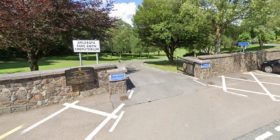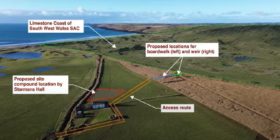Cardiff University Researchers Has Shed New Light On The Origins

For many years archaeologists have found ancient red deer remains on the distant Scottish isles. Evidence from tombs and houses dating from around 5,000 years ago show that humans exploited these iconic animals for food and resources.
Archaeologists had thought that the red deer either swam, or were carried in boats, from the Scottish mainland out to the islands but a study by a team from Cardiff University, published in the journal Proceedings of the Royal Society B, suggests this assumption is wrong.
Archaeologists and geneticists from the University’s Schools of History, Archaeology and Religion, and Biosciences, compared DNA sequences from deer bones found in archaeological sites across Europe.
The results showed that the ancient populations in the Outer Hebrides and Northern Isles are not the same as those present in ancient or modern mainland Scotland, Scandinavia or Ireland. Instead the island deer belonged to a separate part of the line that was found in southwest Europe during the last ice age.
The discovery that deer on outer islands of Scotland are different to mainland populations has uncovered a genuine mystery that cuts to the heart of the place of island communities in a broader European context.
Dr Jacqui Mulville, a specialist in ancient red deer, worked with geneticists Dr David Stanton and Professor Mike Bruford to analyse ancient bones. “The results are surprising,” said Dr Mulville. “We know that human populations introduced domestic animals from the continent to the islands, but did they also bring in wild species such as deer from further afield? Our research adds to a growing body of evidence that strong links with Europe have existed for many thousands of years.”
The research will now be expanded to examine the characteristics of more ancient and modern continental Europe wild animal populations to find archaeological or genetic clues as to where the Scottish island deer originated.
“We think the clue lies within the DNA sequences from red deer populations we have not yet sampled in Europe,” said Dr David Stanton, from the School of Biosciences. “The hunt is now on to find the ancestors of these deer.”
Spotted something? Got a story? Email News@News.Wales












